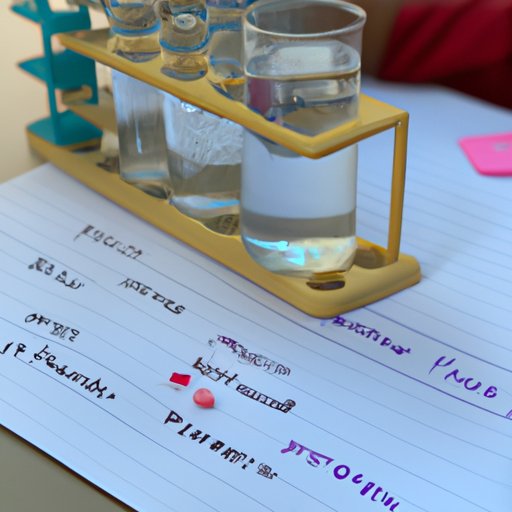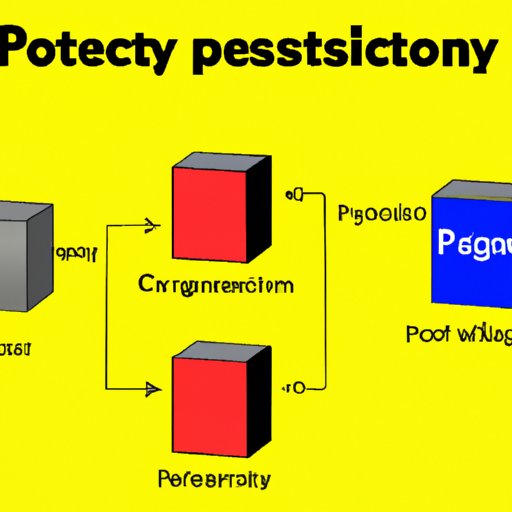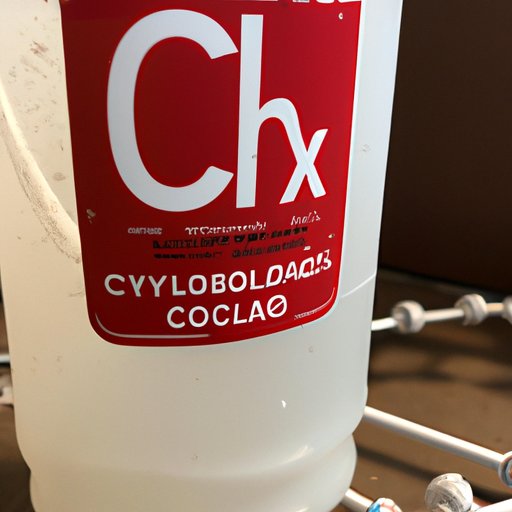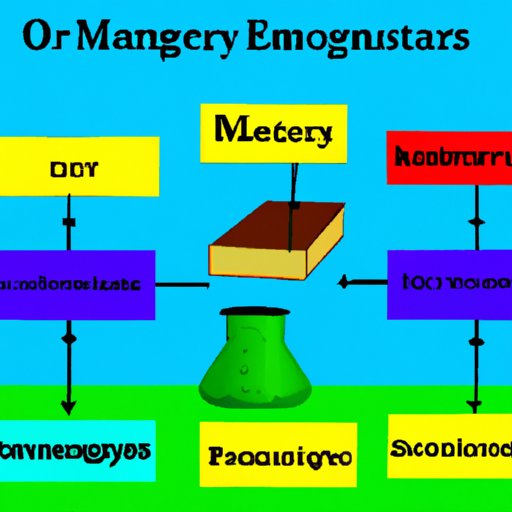Introduction
Properties in science are characteristics used to describe matter and energy. They are the basic building blocks of all scientific studies, as they provide a way to measure, quantify, and compare the characteristics of a substance or phenomenon. This article will explore the definition and purpose of properties in science, as well as provide a comprehensive guide to physical and chemical properties, their intersection with the laws of nature, and their role in scientific discovery.

Exploring the Basics of Properties in Science
In order to understand properties in science, it is important to first define what they are. According to the American Chemical Society, “A property is a characteristic of matter that can be observed and measured without changing the composition of the sample.” This means that a property is a measurable trait of a substance that does not change when the sample is altered. Examples of properties include color, density, boiling point, and electrical conductivity.
Definition of Physical Properties
Physical properties are those which can be observed and measured without changing the composition of the sample. These properties are typically divided into two categories: intensive properties, which are independent of the amount of material present, and extensive properties, which depend on the amount of material present. Examples of intensive properties include density, melting point, boiling point, and hardness. Examples of extensive properties include mass, volume, and electrical charge.
Examples of Physical Properties
There are many examples of physical properties, including color, odor, texture, solubility, melting point, boiling point, electrical conductivity, and hardness. Color is the most common physical property, as it can be observed visually. Odor is another physical property that can be detected by smell. Texture refers to the tactile qualities of a material, such as its roughness or smoothness. Solubility is the ability of a substance to dissolve in another substance. Melting point is the temperature at which a solid turns into a liquid. Boiling point is the temperature at which a liquid turns into a gas. Electrical conductivity is the ability of a material to conduct an electric current. Hardness is a measure of how resistant a material is to being scratched or dented.

A Comprehensive Guide to Physical Properties
Physical properties are only one type of property in science. Another type of property is chemical properties. Chemical properties are those which involve a change in the composition of the sample. Examples of chemical properties include flammability, reactivity, and toxicity.
Definition of Chemical Properties
Chemical properties are characteristics of a substance which involve a change in the composition of the sample. These properties are often used to identify substances, as they indicate how a substance may react with other substances. Examples of chemical properties include flammability, reactivity, and toxicity.
Examples of Chemical Properties
Flammability is the ability of a substance to burn or ignite when exposed to heat or flame. Reactivity is the ability of a substance to interact with other substances. Toxicity is the degree to which a substance is poisonous or harmful to living organisms. Other examples of chemical properties include acidity, alkalinity, pH, and oxidation state.

How Chemical Properties Impact Our Everyday Lives
Chemical properties have a significant impact on our everyday lives. For example, flammability is an important safety consideration when choosing building materials, as some materials may ignite more easily than others. Reactivity is also important, as certain substances may react with each other in unpredictable ways. Finally, toxicity is an important factor to consider when choosing cleaning products, as some may be more hazardous than others.
Examining the Different Types of Properties in Science
In addition to physical and chemical properties, there are several other types of properties in science. These include mechanical properties, electrical properties, and thermal properties.
Mechanical Properties
Mechanical properties are those which involve the behavior of a material under mechanical stress. Examples of mechanical properties include stiffness, strength, ductility, and toughness. Stiffness is the ability of a material to resist deformation. Strength is the ability of a material to resist breaking or fracturing. Ductility is the ability of a material to deform before breaking. Toughness is the ability of a material to absorb energy before breaking.
Electrical Properties
Electrical properties are those which involve the behavior of a material when exposed to an electric field. Examples of electrical properties include conductivity, capacitance, and inductance. Conductivity is the ability of a material to conduct an electric current. Capacitance is the ability of a material to store electric charge. Inductance is the ability of a material to resist changes in electric current.
Thermal Properties
Thermal properties are those which involve the behavior of a material when exposed to heat. Examples of thermal properties include thermal conductivity, specific heat, and thermal expansion. Thermal conductivity is the ability of a material to transfer heat. Specific heat is the amount of heat required to raise the temperature of a unit mass of a material by one degree Celsius. Thermal expansion is the tendency of a material to expand when heated.
Exploring the Intersection of Properties and the Laws of Nature
Properties in science are closely related to the laws of nature. Two of the most important laws are the laws of thermodynamics and the law of conservation of mass. The laws of thermodynamics govern the energy transformations that occur in a system. The law of conservation of mass states that matter can neither be created nor destroyed, but can only be changed from one form to another.
Investigating the Role of Properties in Scientific Experiments
Properties in science also play an important role in scientific experiments. When conducting an experiment, scientists must be aware of the properties of the materials they are using, as these properties can affect the results of the experiment. For example, if a scientist is attempting to determine the boiling point of a substance, the boiling point of the substance must be known in order to accurately measure the results.

Understanding the Significance of Properties in the Sciences
The importance of properties in science cannot be overstated. Properties provide a way to measure, quantify, and compare the characteristics of a substance or phenomenon, allowing scientists to make sense of the world around them. Properties also play an important role in scientific research and discovery, as they provide a framework for understanding the relationship between cause and effect.
Properties are essential to the advancement of science, as they allow scientists to make predictions about how a substance or phenomenon will behave under certain conditions. By understanding the properties of a substance, scientists are able to draw conclusions about its behavior and use this information to develop new theories and technologies.
Conclusion
Properties in science are essential to the advancement of scientific knowledge. They provide a way to measure, quantify, and compare the characteristics of a substance or phenomenon, as well as provide a framework for understanding the relationship between cause and effect. Understanding the different types of properties, their intersection with the laws of nature, and their role in scientific experiments is essential to the pursuit of scientific discovery.
(Note: Is this article not meeting your expectations? Do you have knowledge or insights to share? Unlock new opportunities and expand your reach by joining our authors team. Click Registration to join us and share your expertise with our readers.)
